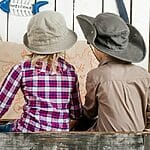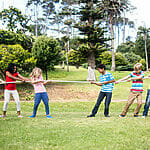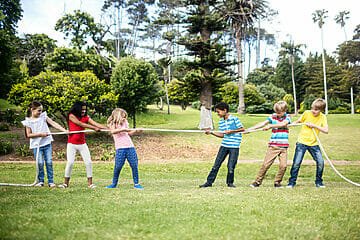As a homeschooling parent, I understand the challenges of making history come alive for children. It can be overwhelming to find the right resources and activities to engage them in the past. However, I have found that incorporating fun and creative methods can make all the difference in making history exciting for kids.
In this article, I will share my personal experience and tips for making history learning fun for homeschoolers. From cultural immersion to incorporating arts and music, there are many ways to bring history to life for your children. By using these engaging methods, you can help your kids develop a love and appreciation for the past that will stay with them for a lifetime.
So let’s dive in and discover how to make history learning an enjoyable experience for the whole family!
Key Takeaways
- Incorporating art projects and music from the time period can make history more engaging for homeschoolers.
- Immersing oneself in the culture of the time period by preparing period-themed meals, playing games, and dressing up can make history feel more alive.
- Using books and movies or documentaries about the time period can help visual learners understand history better.
- Encouraging children to ask questions about what it was like for kids during the time period can make history more relatable and interesting.
Engaging Methods
I love how this author incorporates art projects, music, cooking, games, and dressing up to make history engaging and fun for her son in their homeschooling journey. It’s a great way to make learning interactive and hands-on, which is especially important for children who may struggle with traditional classroom settings.
I appreciate that the author recognizes that studying history can be more than just reading textbooks and encourages experiencing history through various activities. One of the things that stood out to me was how the author includes interactive games as part of their history lessons. Games can be a great way to engage children and make learning fun.
I also appreciate how the author incorporates hands-on activities like cooking and art projects. These activities not only make learning more enjoyable but also help children retain the information better. It’s a great approach to teaching history that I believe more educators and parents should adopt.
Cultural Immersion
By immersing ourselves in the culture of ancient Greece, we could prepare a Greek-inspired meal and play games like the Olympics to better understand the daily life of the people during that time.
Historical recipes can be found in books or online, and we could choose dishes that were common during that period. While we cook, we can talk about the ingredients and how they were obtained, and how cooking techniques have evolved over time.
Role playing activities can also be a fun way to learn about history. We could dress up in togas or chitons and act out scenes from ancient Greek plays or reenact famous battles.
By engaging all of our senses, we can make history come alive and feel more real. These activities not only make learning fun, but they also help us to remember what we’ve learned.
How Can I Make AP World History More Fun for My Homeschooled Child?
Looking for tips and resources for mastering ap world history? Homeschooling your child offers a unique opportunity to tailor their learning experience. Make it more engaging by incorporating interactive activities such as creating timelines, watching educational documentaries, or organizing virtual debates. Utilize online platforms, study guides, and practice exams specifically designed for AP World History. Remember, making learning fun fosters curiosity and deeper understanding.
Incorporating Arts and Music
Exploring the art and music of a particular time period adds depth and richness to my understanding of its culture and history. When studying history, I find it helpful to not only read about the events and people of the time, but also to immerse myself in the art and music of the era. By doing so, I can better comprehend the emotions and attitudes of the people who lived during that time.
To engage my son and make learning history fun, I like to incorporate art project ideas and musical instrument exploration. For example, when studying the Renaissance, we might try our hand at painting like Michelangelo or creating our own illuminated manuscripts. We might also try playing a lute or harpsichord to better understand the music of the time.
These activities not only make history come alive, but also encourage creativity and a love for the arts. By experiencing history through art and music, my son and I are able to make meaningful connections and truly appreciate the culture and history of each time period.













